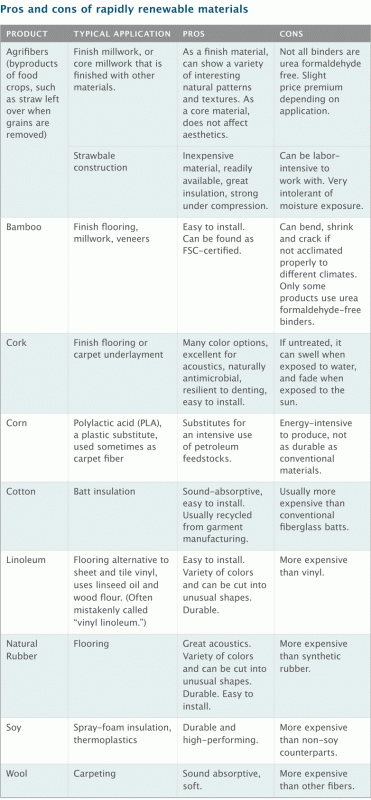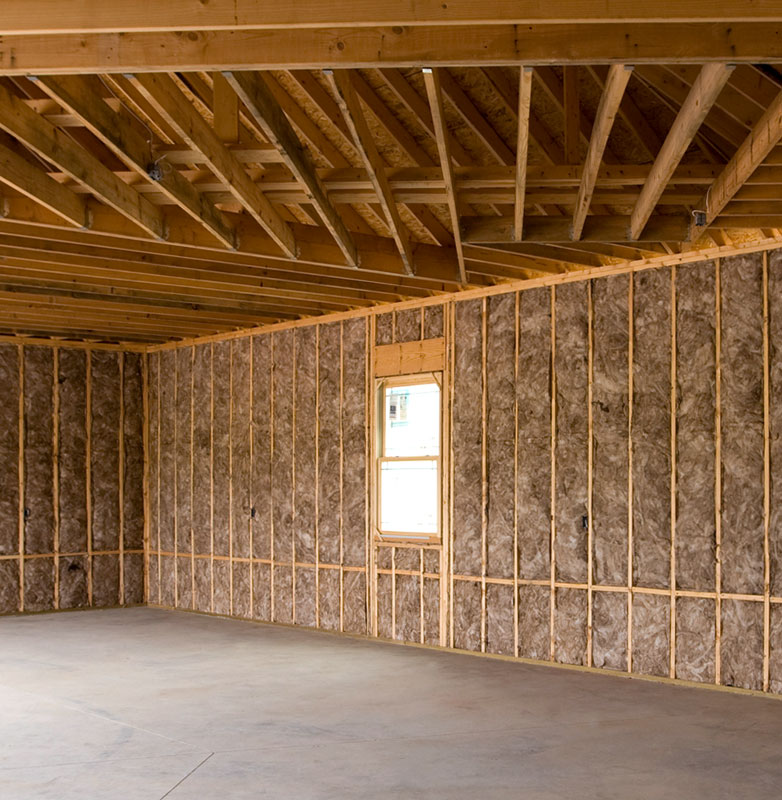
Rapidly renewable materials must have a harvest cycle of 10 years or fewer. This includes materials like bamboo, agrifibers, and others listed on the chart below. Materials for this credit can come from either plants or animals—but they have to be harvested without harming the animal. Wool is okay; leather isn’t.
“Big ticket” items are just the ticket
This credit can be very easy to achieve—it only requires that a small percentage of the materials budget be spent on rapidly renewable materials. But it can become challenging unless you make a concerted effort to research and specify products with rapidly renewable content in mind. Don’t wait until materials are purchased to calculate your credit compliance—chances are, you won’t make it.
Focusing on a few more expensive items with rapidly renewable content can be an easy way to make sure that you meet the budget threshold while minimizing the number of products you will need to track and document.
Finish materials tell a “green story”
Rapidly renewable materials can be an effective advertisement of your project’s commitment to “green”—many rapidly renewable materials make great interior finishes, including bamboo flooring and veneers, cork flooring, wool carpeting, agrifiber casework, and others. Projects interested in “telling the green story” through their choice of finish materials will often pursue these materials.
There are affordable options
While finish materials may come at a cost premium, there are plenty of other ways to use rapidly renewable materials less visibly and more affordably: strawbale construction, cotton batt insulation, cork carpet underlayment, and agrifiber board in millwork, to name a few. (See table above.)

Knauf’s EcoBatt fiberglass insulation uses the company’s Ecose binder, which is manufactured using rapidly renewable materials instead of petroleum derivatives.
Photo – Knauf InsulationSuit the materials to the space
It’s also important to select rapidly renewable materials that best suit the function of the space. For example, cork absorbs sound well, which would be useful in a classroom setting. On the other hand, there may be situations when it might be better to choose a recycled material instead—wool carpet in a high-traffic area, for example, would not be as durable as recycled-content commercial carpet and would wear out more quickly.
Double dip with MR credits
Products with multiple environmental attributes—such as rapidly renewable and regionally produced—can contribute to multiple LEED credits.

